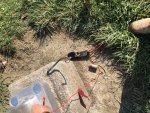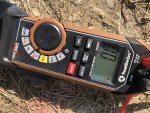Dsg319
Senior Member
- Location
- West Virginia
- Occupation
- Wv Master “lectrician”
At an old compressor station and replaced light poles with new and old poles were tied in to the existing ground grid, but new ones are set in place on concrete piers and old wire won’t reach. I have new circuit wire and egc bonded to pole. And was curious and got my ohm meter and checked from light pole to remote earth (piece of metal drove in earth). And got 0ohms. Is this method a good way(or at least work in a pinch) to check for resistance from pole to earth for touch potential, and lighting protection?



